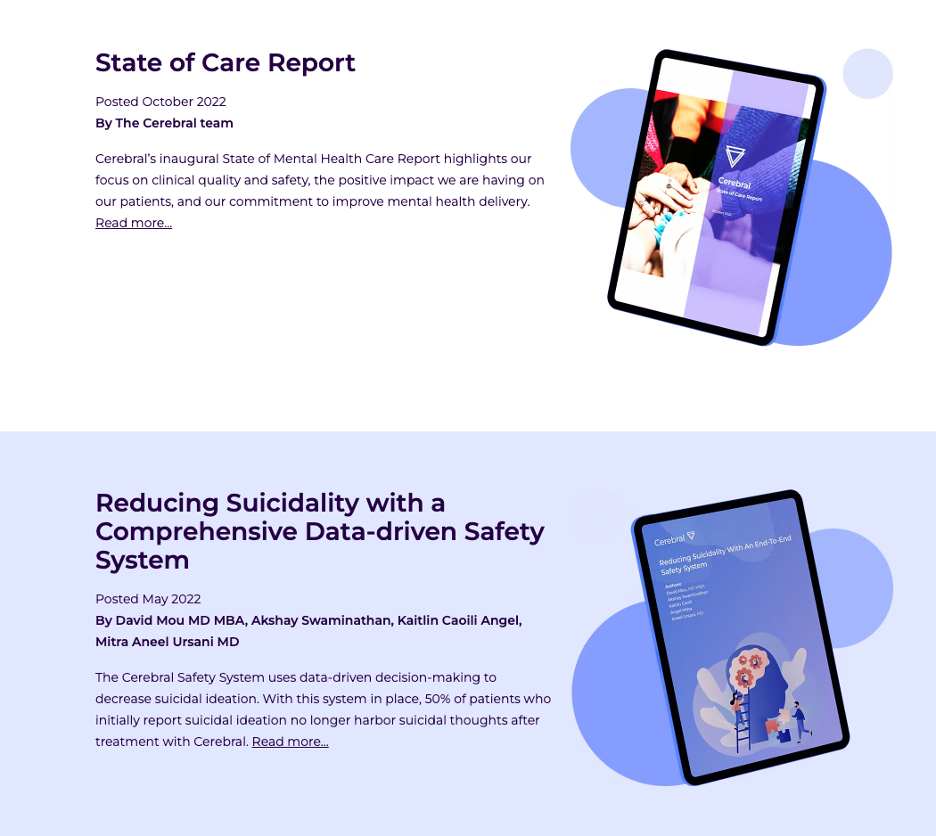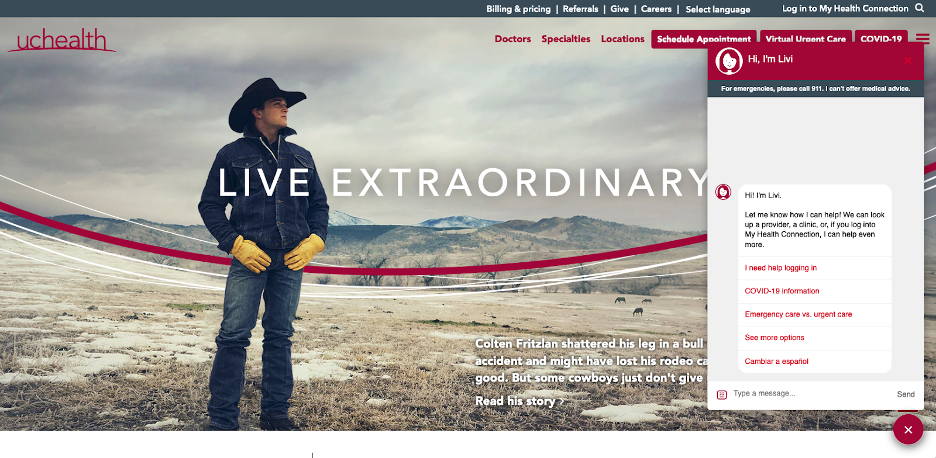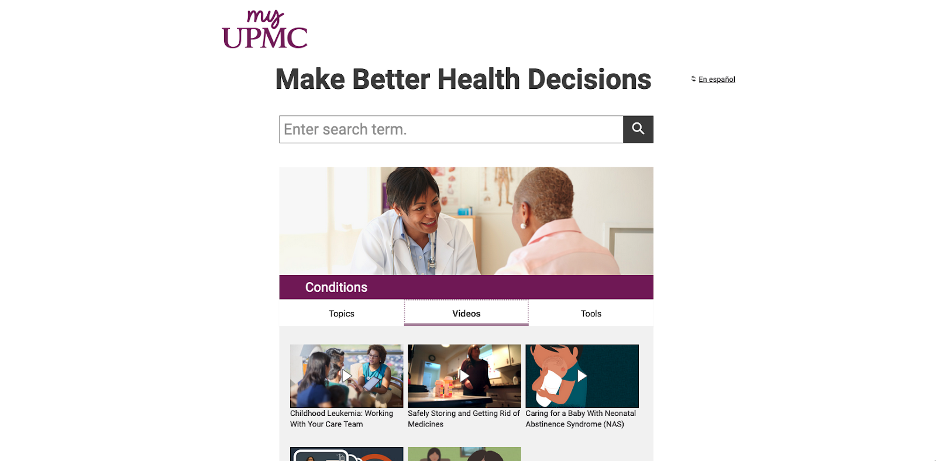Digital Transformation
5 Healthcare Content Marketing Strategies That Prioritize the Patient Experience
The COVID-19 pandemic has forced healthcare organizations to rapidly adjust their strategies and operations in order to provide patients with efficient, safe, and quality care.
At the same time, patients have started to think more like consumers by taking a proactive approach to their healthcare.
Now that patients are more apt to research conditions, weigh treatment options, and compare provider costs, healthcare organizations are feeling the digital transformation pressure. As if that wasn’t enough, healthcare content marketers must also navigate the industry’s strict regulations.
Our recent State of Content Marketing: Healthcare 2023 report takes a deep dive into key strategies healthcare content marketers should prioritize to drive patient engagement and meet consumer needs.
Let’s take a quick look at five strategies you should focus on to catch up and keep pace with brands that create successful customer experiences.
1. Prioritize Customer Experience
Providing a positive patient experience is crucial in the healthcare industry, and customers expect healthcare providers to deliver the same level of service as other industries.
In fact, a recent Salesforce survey found that almost 90 percent of customers consider the experience they have interacting with a company as important as its products or services. Content strategists can play a crucial role in improving the customer experience by prioritizing several areas.
Promote Positive Customer Experiences on Your Website
A user-friendly website is essential to ensure a positive patient experience. Patients should find information easily, including office hours, online scheduling, and availability of specific healthcare providers.
In addition, search engine optimization (SEO) is also critical for website performance. You can evaluate your website for best practices in user experience, content, brand perception, and responsiveness to improve its overall performance.
Provide a Personalized Patient Portal
A personalized patient portal can empower patients to take a more proactive role in their healthcare. You can offer self-educational resources on visit preparation, common procedures, or medication options through the portal. By providing access to this information, healthcare organizations can improve patient satisfaction and reduce the workload on healthcare providers.
Create a Resource Center
Creating a resource center that addresses the most common patient pain points and provides thought leadership on highly searched topics is a game-changer for your organization.
A resource center can act as a centralized location for all the information that patients need, making it easier for them to find the resources they need to make informed decisions about their healthcare.
Boulder Care Exemplifies Customer Experience Excellence
Boulder Care is an online healthcare company that prioritizes customer experience by offering supervised medical treatment, peer recovery coaching, and a care advocate to ensure everything stays on track for people living with substance abuse disorders.
Clients can connect with their care providers through private messaging and video conferencing on their easy-to-use app from anywhere in the world. By integrating all aspects of patient care online, Boulder Care provides an excellent customer experience, which sets them apart in the healthcare industry.
2. Amplify Personalization Tactics
In today’s marketplace, personalization is key to providing a positive customer experience. It involves serving the right information to the right customer at the right time on the right channel. Despite the challenges of managing vast amounts of data, AI is helping many industries, including healthcare, improve customer experiences and personalize interactions.
While healthcare organizations face challenges with data privacy laws, they can still prioritize personalized consumer journeys. The key is to ensure the patient is the “hero” of the content, and healthcare organizations should keep their target audience at the center of everything they produce.
By doing so, they can improve the patient experience and build long-term relationships with their customers. The easiest way to do this is to keep questions like these in mind as you write:
- What problem does the reader/persona have?
- What questions might they ask a healthcare provider?
- What solutions or answers are they looking for?
- What stage of care is the reader in while consuming this piece of content?
- What is the action you want them to take after reading?
Buyer personas can also help segment the audience based on varying concerns, so you can create content to address their specific needs.
Cerebral Provides Personalized Patient Resources
Cerebral, a telehealth company, provides access to affordable, high-quality mental healthcare and uses personalized resources to improve the patient experience. Counselors offer tailored resources, such as one-sheeters on dealing with panic attacks, to address specific patient needs.
They also use personas to target specific audiences on their blog, providing useful information about managing and alleviating symptoms of various ailments. Their resource center offers comprehensive research on mental health, suicide prevention, and behavioral health.
By personalizing content in a meaningful and authentic way, Cerebral builds long-term relationships with patients and improves the overall patient experience.
3. Integrate Innovative Martech into Healthcare Content Marketing
The COVID-19 pandemic saw U.S. federal government and healthcare researchers using AI to quickly understand the virus. In fact, experts expect the global AI healthcare market to increase six-fold by 2027.
Healthcare marketers can leverage AI to improve customer experiences by using customer information from call tracking, chatbots, patient portals, and mobile apps for personalization.
Chatbots can answer questions, provide access to content, and even help schedule appointments, with the global healthcare chatbot market expected to grow nearly 10-fold by 2032.
By capturing customer data, marketers can personalize future experiences with individual consumers, too.
UCHealth Integrates Martech into its Strategy
UCHealth, a healthcare network in Colorado, is using AI to improve customer experience through a chatbot named Livi. Patients can access Livi through voice search on smart speakers, and the network is working to integrate the chatbot into their electronic medical records system and mobile app.
Despite data privacy and protection concerns in healthcare, organizations can use AI technology to personalize content and improve customer experiences. Consider starting with a chatbot as a simple first step.
4. Strategize With SEO in Mind
According to Gartner’s 2022 State of Marketing Budget and Strategy report, healthcare digital marketing budgets are mostly spent on search advertising. However, as third-party cookies become obsolete, healthcare marketers will need to nurture first-party data.
Your SEO strategy should prioritize high-quality content with competitive keywords and unique perspectives on trending topics is essential. Personalization is important in delivering the right content to the right person at the right time through the right channel.
Healthcare companies must also provide reliable and accurate patient education to their audience. The key is creating healthcare content marketing that answers the questions and addresses topics patients are searching for.
UPMC Targets Search Intent with its SEO Strategy
The University of Pittsburgh Medical Center (UPMC), a distinguished healthcare provider and insurer, uses a cohesive content strategy that caters to patient interests, aligning content with searchers’ intent and generating articles based on engagement.
Their myUPMC platform consolidates all UPMC-related information, available for patients anywhere, anytime, to help enhance customer experience.
This comprehensive resource hub offers a range of content formats, including blog posts, videos, and symptom checkers, aimed at providing patients with the information they need to make informed decisions about their health, ultimately improving patient education.
5. Deploy More Short-Form Videos
Short-form video is becoming a top marketing trend for 2023, with explainer videos being watched by 96 percent of viewers to learn more about products and services. Testimonials from former patients or staff can create engaging moments and leverage user-generated content (UGC) to connect with customers or clients.
An effective healthcare content marketing strategy also includes repurposing content that has already been created — like infographics, quotes from blogs, and sections from longer-form videos like webinars — for social media content short-form videos. Companies can increase web traffic and awareness of their brand by incorporating short-form videos into their marketing strategy.
BetterHelp Uses Video to Educate and Engage Their Audience
BetterHelp is a popular online counseling service that has leveraged the power of short-form videos to cater to its customers and prospects.
The company has tapped into social media platforms like YouTube and TikTok, employing personalization and SEO strategies to create content that aligns with its target audience’s preferences.
They have successfully engaged millennials and Gen Z, expanding their reach by utilizing TikTok to distribute their message to a broader audience.
Healthcare companies must adopt an innovative and forward-thinking content marketing strategy to stay ahead of the competition. As we’ve shown, organizations that prioritize the patient experience can succeed in a highly competitive market and ensure that customers discover the information they need to make informed decisions about their health.
Learn how to accelerate your digital transformation using Contently’s content marketing platform, and download your copy of 5 Content Strategies Transforming the Patient Experience today.
Image by t:fedrelenaGet better at your job right now.
Read our monthly newsletter to master content marketing. It’s made for marketers, creators, and everyone in between.








